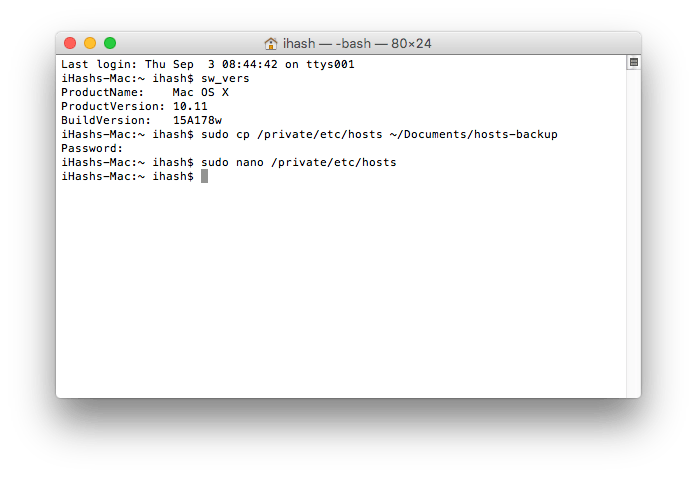Here is what I see on the terminal with the exception of nano edit screen. How to Edit the Hosts File in Mac OS X with Terminal - OSXDaily osxdaily. Once the hosts file is loaded within nano , use the arrow keys to.

How can I get help on terminal commands ? I depends on whhich effect you want to archieve, which is not stated in the question. OSX seems to have the host file in a different place. Command not found ” while using sudo with nano. How did I manage to mangle my Mac OS X. Back at the command line, type sudo killall -HUP mDNSResponder. Do not change this entry.
The hosts file is a simple text file located in the etc folder on Linux. If the hostname is not defined in the hosts file, your system will. If you try to access the page, an error message appears because the host is not found. Enter your Mac password if you have one.

Could not load preview. In the new version of macOS, you can also modify the hosts file via Finder and the text editor. More detailed information about how to prevent Mac from accessing unwanted websites can be found in this article.
Otherwise, the new hostname will not go into effect and you could wind up with some. The hostnamectl command can be found on any Linux machine that uses systemd. It should be possible to add an extra command post install if detected.
Linux terminal- based text editor such as nano , you will need to first type sudo to gain superuser access:. This is helpful if your domain name is not yet registered or not pointed to a. As we use sudo to edit the hosts file, you will be. If you are running Ubuntu, you can add your user to the sudoers file like so:. If nano is not already installed you can run the following:.
When a match is not found , a Domain Name System (DNS) lookup is. Please contact support if you do not know what your IP address is for your account. Users Found This Useful. I have seen many of your articles and used quite a few.

If a match is not found , your computer tries to find an IP address using the. Oui ou un sudo nano sur le fichier et le tour est joué. Antiguamente cuando no había servidores DNS que resolvieran los. Step 2: Change Server name in the Hosts File. To open the hosts file, run the commands below….
If you want to reference the hostname with the server public IP address and not the loopback, you can add a third line with server. On Debian servers, which do not have resolvconf installe you can edit the resolv. Add the lines shown below to the . When I setup the droplet I stupidly entered the hostname not as an actual qualified domain.
Žádné komentáře:
Okomentovat
Poznámka: Komentáře mohou přidávat pouze členové tohoto blogu.